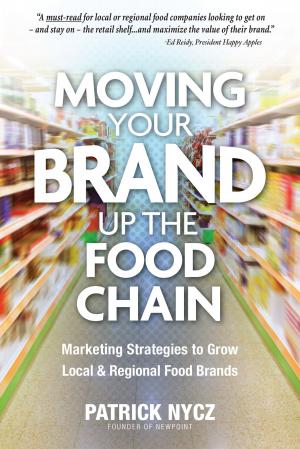Molecules of Nature: Biodiversity, the Sixth Mass Extinction and the Future of Medicine
Kids, Natural World, Conservation and Protection| Author: | Paul F. Torrence | ISBN: | 9781457561047 |
| Publisher: | Dog Ear Publishing | Publication: | December 13, 2017 |
| Imprint: | Dog Ear Publishing | Language: | English |
| Author: | Paul F. Torrence |
| ISBN: | 9781457561047 |
| Publisher: | Dog Ear Publishing |
| Publication: | December 13, 2017 |
| Imprint: | Dog Ear Publishing |
| Language: | English |
Molecules of nature are created by living organisms in their quest to survive and thrive in Earth’s challenging environments. This ages-old evolutionary struggle has produced an immense library of chemicals from which humans have selected invaluable therapeutics critical to modern medicine. Natural products presently provide half of all prescription medications and 70% of all cancer drugs. The success of continued drug development from natural products depends upon the diversity of molecules of nature, which in turn depends upon biodiversity. Unfortunately, human-caused damage to the environment, from pollution to habitat loss to overexploitation of resources, is causing unprecedented ecological damage and death of species: a mass extinction event. Unless this biotic crisis is obviated, humanity will lose a primary source of future novel medicines. This book assembles a powerful argument for nature’s critical role in providing medicines for humanity and how that irreplaceable service is threatened by the extinction crisis.
A sampling of the molecules of nature employed in modern medicine reads like a catalog of biodiversity. For example, one of the most prescribed drugs in the United States is lisinopril, which controls high blood pressure. Lisinopril originated from the venom of a deadly viper from the Amazonian forests. A denizen of US southwestern deserts provided a therapeutic for type-II diabetes. The ancient horseshoe crab of the US Atlantic coast enables a critical test for deadly endotoxins in medical products of all kinds. Once, a diagnosis of acute lymphocytic leukemia in children was a death sentence. A tropical flower from Madagascar provided two natural products that changed a 90% fatality rate to a 90% cure rate. The Pacific Yew tree from the US northwest was discovered to contain the potent anticancer agent Taxol, now vital in the treatment of breast and ovarian cancers and Kaposi’s sarcoma.
This book tells the fascinating story of these and other medicines. It also summarizes some of the driving forces of the Sixth Mass Extinction and shows how it threatens at least half of the planet’s species with extinction. We rightly ask: What will be the future of medicine without the contribution of millions of species? How many treatments for disease will be forever lost? What cures are we asking future generations to forgo? As we willy-nilly extinguish the future of one organism after another together with all the knowledge they hold, we are like the looters of the Great Library of Alexandria.
The final chapter challenges readers to pursue a different outcome: By uniting our efforts, we can still preserve many of the remaining species on our blue-green planet and the invaluable gifts they offer.
Molecules of nature are created by living organisms in their quest to survive and thrive in Earth’s challenging environments. This ages-old evolutionary struggle has produced an immense library of chemicals from which humans have selected invaluable therapeutics critical to modern medicine. Natural products presently provide half of all prescription medications and 70% of all cancer drugs. The success of continued drug development from natural products depends upon the diversity of molecules of nature, which in turn depends upon biodiversity. Unfortunately, human-caused damage to the environment, from pollution to habitat loss to overexploitation of resources, is causing unprecedented ecological damage and death of species: a mass extinction event. Unless this biotic crisis is obviated, humanity will lose a primary source of future novel medicines. This book assembles a powerful argument for nature’s critical role in providing medicines for humanity and how that irreplaceable service is threatened by the extinction crisis.
A sampling of the molecules of nature employed in modern medicine reads like a catalog of biodiversity. For example, one of the most prescribed drugs in the United States is lisinopril, which controls high blood pressure. Lisinopril originated from the venom of a deadly viper from the Amazonian forests. A denizen of US southwestern deserts provided a therapeutic for type-II diabetes. The ancient horseshoe crab of the US Atlantic coast enables a critical test for deadly endotoxins in medical products of all kinds. Once, a diagnosis of acute lymphocytic leukemia in children was a death sentence. A tropical flower from Madagascar provided two natural products that changed a 90% fatality rate to a 90% cure rate. The Pacific Yew tree from the US northwest was discovered to contain the potent anticancer agent Taxol, now vital in the treatment of breast and ovarian cancers and Kaposi’s sarcoma.
This book tells the fascinating story of these and other medicines. It also summarizes some of the driving forces of the Sixth Mass Extinction and shows how it threatens at least half of the planet’s species with extinction. We rightly ask: What will be the future of medicine without the contribution of millions of species? How many treatments for disease will be forever lost? What cures are we asking future generations to forgo? As we willy-nilly extinguish the future of one organism after another together with all the knowledge they hold, we are like the looters of the Great Library of Alexandria.
The final chapter challenges readers to pursue a different outcome: By uniting our efforts, we can still preserve many of the remaining species on our blue-green planet and the invaluable gifts they offer.















